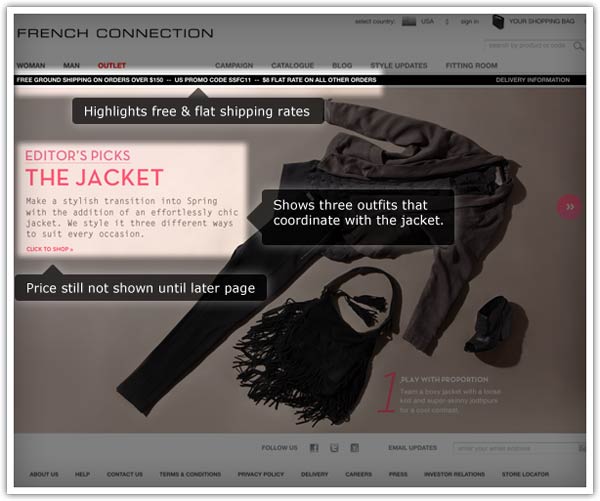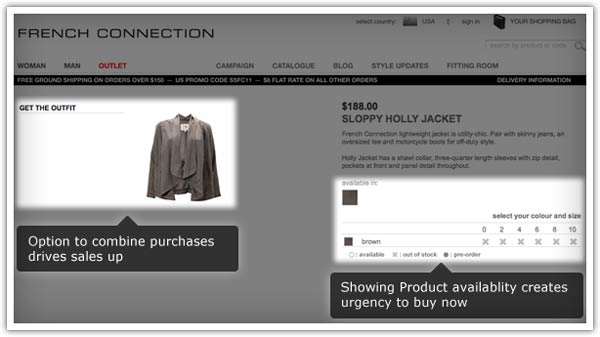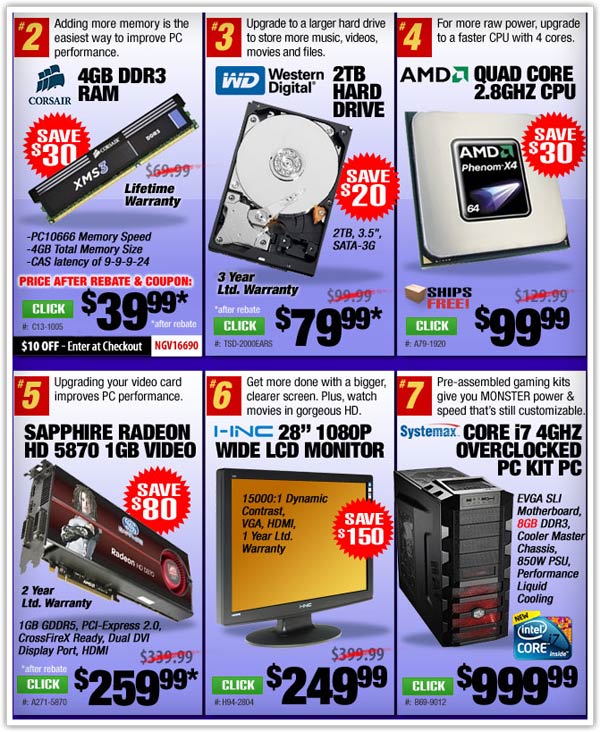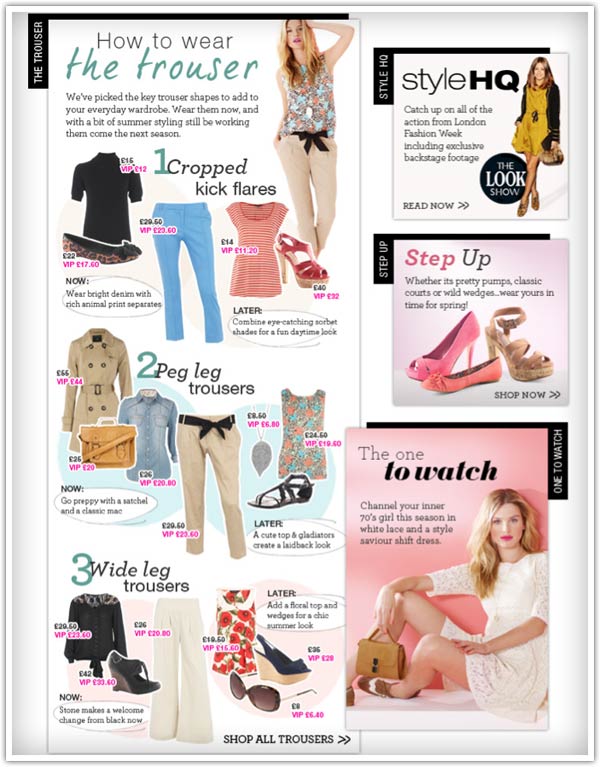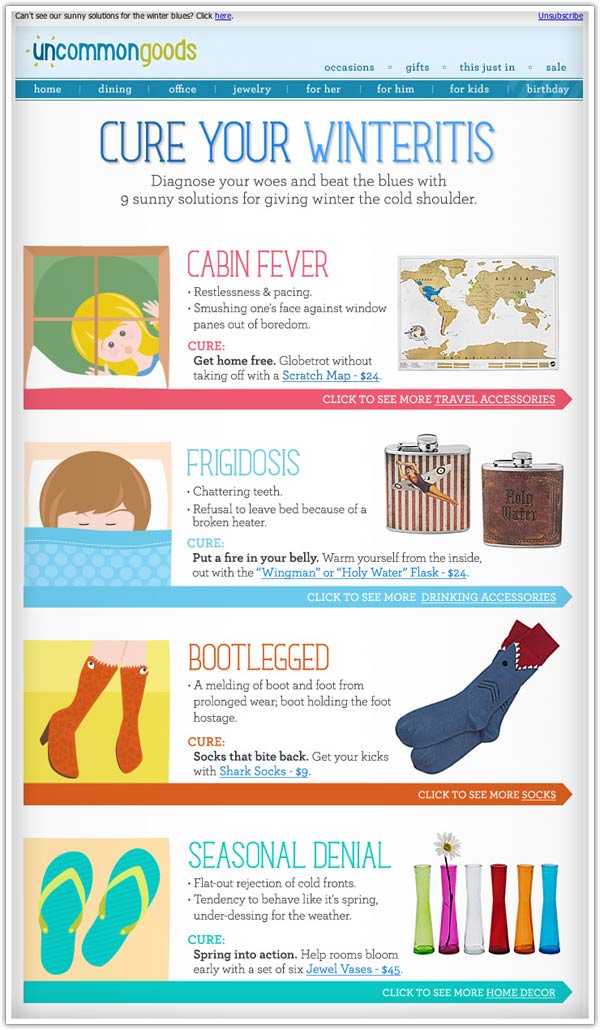Should You Put Prices In Marketing Emails?
By Amanda Gagnon June 8, 2011

You may think you’re trying to sell your products or service in your emails.
Some people would say you’re wrong.
You never actually complete a sale in an email – that happens on your web site. So your email, they say, should sell a click to your site. Then on your site, you can talk details like price to sell the product.
Jay, whom you may have met in a webinar, disagrees. He much prefers prices listed right within emails. Then he can weigh all his options without clicking anywhere for more information.
So… should you list prices in your emails or not? Let’s discuss this.
They Say: Entice Now, Sell Later
When people check their email, they have dozens of things on their mind. To get a reaction from them, your email needs to be irresistible.
It needs to paint an alluring picture. To make them want your product so badly, they can’t look away, and they’re itching to click through and find out how to get it.
Talking price would break the spell.
This may sound fantastical, but it’s got a practical benefit: back on your site, you have plenty of room to counteract any negative reaction someone may have to the price. See for yourself:
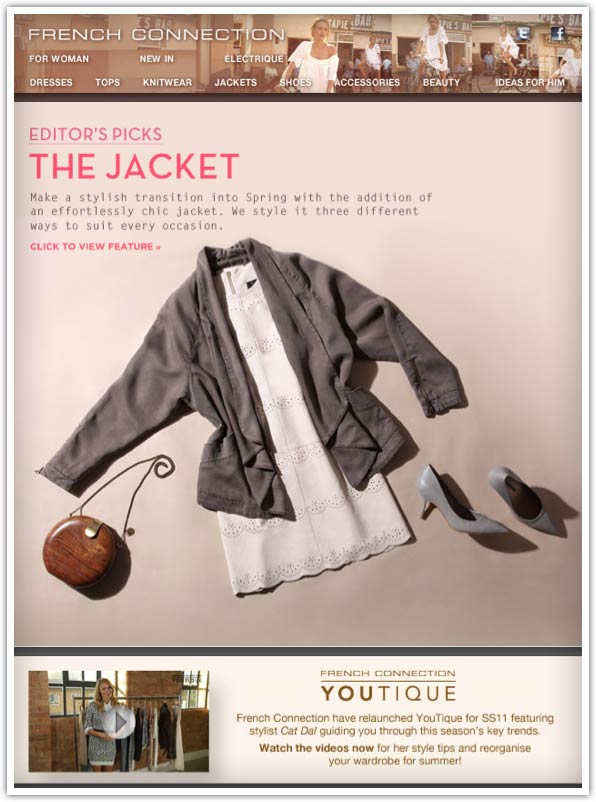
In their emails, French Connection creates a desire to buy without alluding to price at all. Back on their site, they keep selling readers on the product for at least one (and up to three) pages before mentioning the cost.
Finally, when they do list the price, they counter it with the idea of owning the entire coordinated outfit and a feeling of urgency that, if the jacket isn’t sold out yet, it may be soon.
Jay Says: Present Your Price As Soon As Possible
Some consumers, like Jay, are tougher sells. They’re not as entranced by the spell you’ve woven. These tougher consumers believe there’s always a flip side, and they don’t want to spend their time clicking around to find out what it is.
So, seeing no price, they shrug and delete your email. Then they go respond to messages with prices displayed, like this one from Tiger Direct.
“If I’m going to buy something, I’ve already done the research as to what it is, and now I just want to know where I can get it and for how much,” he says.
The Verdict
Whether or not you include prices in your email depends on two things:
1. Your audience. Every business attracts a different kind of following. Does your readers want to be swept off their feet and trust you to tell them what’s worth buying? Or are they more cynical and want their information up front?
Maybe you have an audience of bargain-hunters, for whom a good price is paramount. Or maybe for your readers, price is no object as long as they’re getting the best.
2. Your brand image. Do you compete on price? Or do you have well-established competitors who sell cheaper, but can’t match the quality you provide?
If you’re not sure how your readers feel or what exactly you’re competing on, you can always run a split test to find out.
Either Way, Send Value
This doesn’t just mean 15%-off offers – those are a dime a dozen. It means being helpful. Not just promoting products your subscribers just might want, but truly anticipating their needs and concerns, then thoroughly meeting them.
For example, this email from retailer Dorothy Perkins not only presents two outfit ideas for each pair of trousers, it explains what you’d wear the outfits for.
And here, Uncommon Goods‘ message (very creative for an HTML retail email) starts with the problem, then offers products as fun solutions.
What’s Your Price Preference?
Do you list prices in your emails? Do you feel that helps you sell more products?
Or do you keep mum about money ’til you’ve got your readers on your site?
 87% off ends soon!
87% off ends soon! 